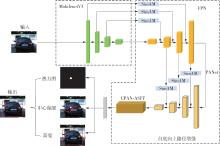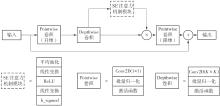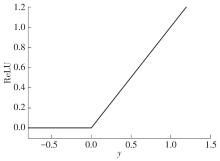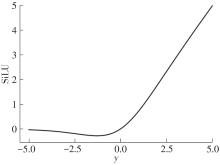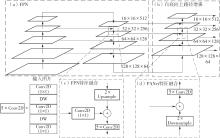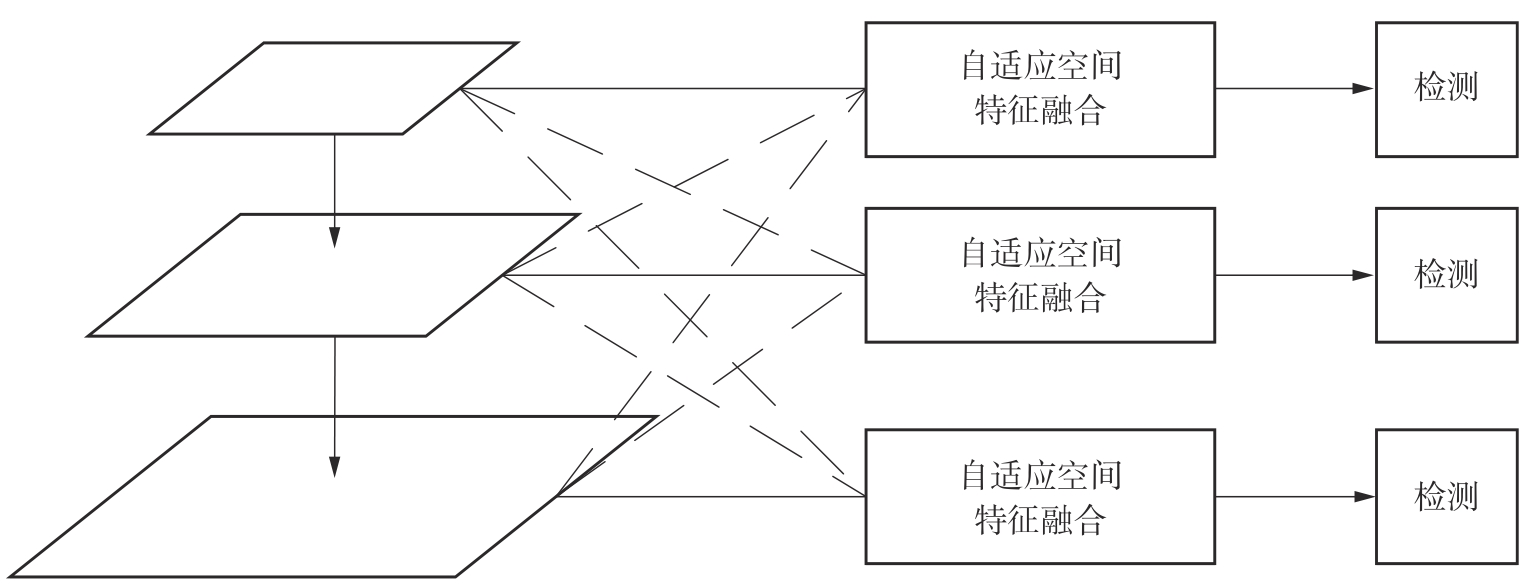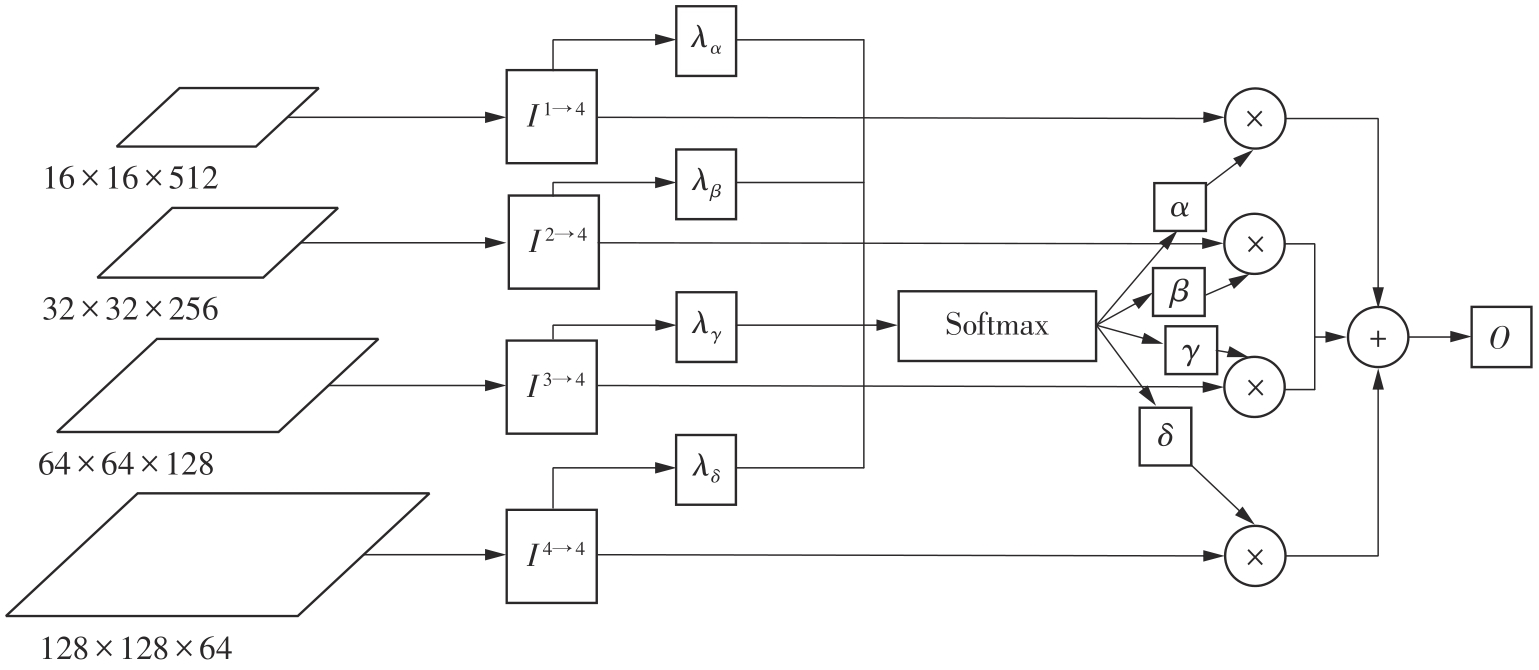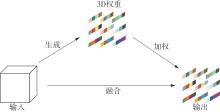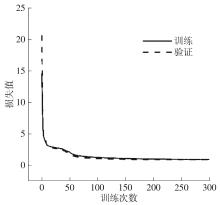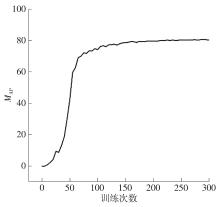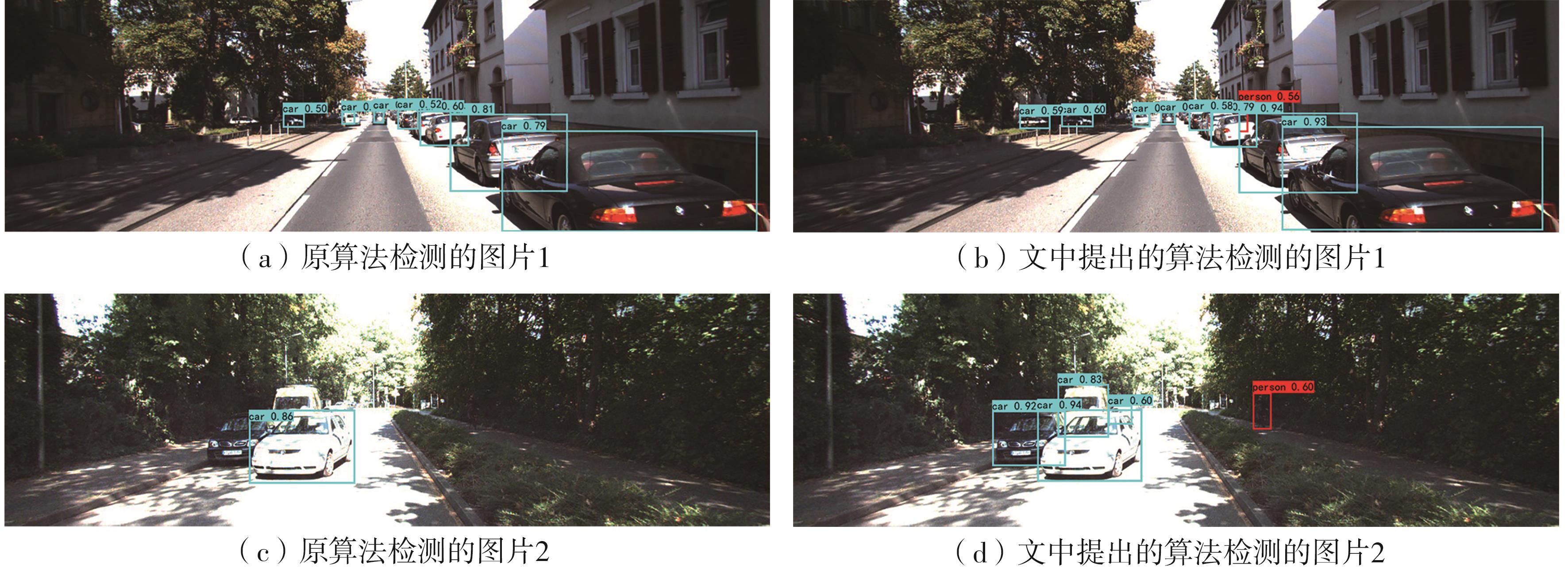Journal of South China University of Technology(Natural Science Edition) ›› 2024, Vol. 52 ›› Issue (8): 45-55.doi: 10.12141/j.issn.1000-565X.230513
• Traffic & Transportation Engineering • Previous Articles Next Articles
Intelligent Vehicle Object Detection Algorithm Based on Lightweight CenterNet
- School of Civil Engineering and Transportation,Northeast Forestry University,Harbin 150040,Heilongjiang,China
-
Received:2023-08-08Online:2024-08-25Published:2023-12-27 -
About author:岳永恒(1973 —),男,博士,副教授,主要从事交通安全及控制理论及应用。E-mail: yueyyh@126.com -
Supported by:the Key Research and Development Plan Projects of Heilongjiang Province(JD22A014);the National Automobile Accident In-Depth Investigation System Funding Project(NAIS-ZL-ZHGL-2020018);the National Natural Science Foundation of China(62173107)
CLC Number:
Cite this article
YUE Yongheng, NING Ruihou. Intelligent Vehicle Object Detection Algorithm Based on Lightweight CenterNet[J]. Journal of South China University of Technology(Natural Science Edition), 2024, 52(8): 45-55.
share this article
| 1 | GIRSHICK R, DONAHUE J, DARRELL T,et al .Rich feature hierarchies for accurate object detection and semantic segmentation[C]∥ Proceedings of 2014 IEEE Conference on Computer Vision and Pattern Recognition(CVPR).Columbus:IEEE,2014:580-587. |
| 2 | GIRSHICK R, DONAHUE J, DARRELL T,et al .Region-based convolutional networks for accurate object detection and segmentation[J].IEEE Transactions on Pattern Analysis and Machine Intelligence,2015,38(1):142-158. |
| 3 | GIRSHICK R .Fast R-CNN[C]∥ Proceedings of 2015 IEEE International Conference on Computer Vision (ICCV).Santiago:IEEE,2015:1440-1448. |
| 4 | HE K M, ZHANG X Y, REN S Q,et al .Spatial pyramid pooling in deep convolutional networks for visual re-cognition[J].IEEE Transactions on Pattern Analysis and Machine Intelligence,2015,37(9):1904-1916. |
| 5 | REN S Q, HE K M, GIRSHICK R,et al .Faster R-CNN:towards real-time object detection with region proposal networks[J].Advances in Neural Information Processing Systems,2017,39(6):1137-1149. |
| 6 | REDMON J, DIVVALA S, GIRSHICK R,et al .You only look once:unified,real-time object detection[C]∥ Proceedings of 2016 IEEE Conference on Computer Vision and Pattern Recognition (CVPR).Las Vegas:IEEE,2016:779-788. |
| 7 | LIU W, ANGUELOV D, ERHAN D,et al .Ssd:single shot multibox detector[C]∥ Proceedings of 2016 European Conference on Computer Vision (ECCV).Amsterdam:Springer,2016:21-37. |
| 8 | SONG Y K, HONG S H, HU C T,et al .MEB-YOLO:an efficient vehicle detection method in complex traffic road scenes[J].Computers Materials & Continua,2023,75(3):5761-5784. |
| 9 | CAO G M, XIE X M, YANG W Z,et al .Feature-fused SSD:fast detection for small objects[C]∥ Proceedings of Ninth International Conference on Graphic and Image Processing (ICGIP 2017).Qingdao:SPIE,2018:381-388. |
| 10 | LIN T Y, GOYAL P, GIRSHICK R,et al .Focal loss for dense object detection[C]∥ Proceedings of 2017 IEEE International Conference on Computer Vision (ICCV).Venice:IEEE,2017:2980-2988. |
| 11 | ZHAO G C, PANG J, ZHANG H,et al .Anchor-free network for multi-class object detection in remote sensing images[C]∥ Proceedings of 2020 39th Chinese Control Conference (CCC).Shenyang:IEEE,2020:7510-7515. |
| 12 | LAW H, DENG J .CornerNet:detecting objects as paired keypoints[C]∥ Proceedings of 2018 European Conference on Computer Vision (ECCV).Munich:Springer,2018:734-750. |
| 13 | CARION N, MASSA F, SYNNAEVE G,et al .End-to-end object detection with transformers[C]∥ Proceedings of 2020 European Conference on Computer Vision (ECCV).Glasgow:Springer,2020:213-229. |
| 14 | ZHOU X Y, WANG D Q, KRÄHENBÜHL P .Objects as points[J].arXiv preprint arXiv:,2019. |
| 15 | HOWARD A, SANDLER M, CHU G,et al .Searching for mobilenetv3[C]∥ Proceedings of 2019 IEEE International Conference on Computer Vision (ICCV).Seoul:IEEE,2019:1314-1324. |
| 16 | LIU S, QI L, QIN H F,et al .Path aggregation network for instance segmentation[C]∥ Proceedings of 2018 IEEE Conference on Computer Vision and Pattern Recognition (CVPR).Salt Lake City:IEEE,2018:8759-8768. |
| 17 | YANG L X, ZHANG R Y, LI L D,et al .Simam:a simple,parameter-free attention module for convolutional neural networks[C]∥ Proceedings of International Conference on Machine Learning (ICML).Williamstown:PMLR,2021:11863-11874. |
| 18 | RAMACHANDRAN P, ZOPH B, LE Q V .Searching for activation functions[J].arXiv preprint arXiv:,2017. |
| 19 | GLOROT X, BORDES A, BENGIO Y .Deep sparse rectifier neural networks[C]∥ Proceedings of Fourteenth International Conference on Artificial Intelligence and Statistics.Fort Lauderdale:JMLR,2011:315-323. |
| 20 | GEIGER A, LENZ P, URTASUN R .Are we ready for autonomous driving?the KITTI vision benchmark suite[C]∥ Proceedings of 2012 IEEE Conference on Computer Vision and Pattern Recognition (CVPR).Providence:IEEE,2012:3354-3361. |
| 21 | NEUBECK A, VAN GOOL L .Efficient non-maximum suppression[C]∥ Proceedings of 18th International Conference on Pattern Recognition (ICPR).Hong Kong:IEEE,2006:850-855. |
| 22 | LIN T Y, DOLLÁR P, GIRSHICK R,et al .Feature pyramid networks for object detection[C]∥ Proceedings of 2017 IEEE Conference on Computer Vision and Pattern Recognition (CVPR).Honolulu:IEEE,2017:2117-2125. |
| 23 | ZHANG X X, LI N, ZHANG R X .An improved lightweight network MobileNetv3 based YOLOv3 for pedestrian detection[C]∥ Proceedings of 2021 IEEE International Conference on Consumer Electronics and Computer Engineering (ICCECE).Guangzhou:IEEE,2021:114-118. |
| 24 | WANG S Y, ZHAO J,TA N,et al .A real-time deep learning forest fire monitoring algorithm based on an improved Pruned+ KD model[J].Journal of Real-Time Image Processing,2021,18(6):2319-2329. |
| 25 | HOWARD G, ZHU M L, CHEN B,et al .Mobilenets:efficient convolutional neural networks for mobile vision applications[J].arXiv preprint arXiv:,2017. |
| 26 | SANDLER M, HOWARD A, ZHU M L,et al .Mobilenetv2:inverted residuals and linear bottlenecks[C]∥ Proceedings of 2018 IEEE Conference on Computer Vision and Pattern Recognition (CVPR).Salt Lake City:IEEE,2018:4510-4520. |
| 27 | HU J, SHEN L, SUN G .Squeeze-and-excitation networks[C]∥ Proceedings of 2018 IEEE Conference on Computer Vision and Pattern Recognition (CVPR).Salt Lake City:IEEE,2018:7132-7141. |
| 28 | ELFWING S, UCHIBE E, DOYA K .Sigmoid-weighted linear units for neural network function approximation in reinforcement learning[J].Neural Networks,2018,107:3-11. |
| 29 | MA N N, ZHANG X Y, LIU M,et al .Activate or not:learning customized activation[C]∥ Proceedings of the IEEE/CVF Conference on Computer Vision and Pattern Recognition (CVPR).Nashville:IEEE,2021:8032-8042. |
| 30 | LIU S T, HUANG D, WANG Y H .Learning spatial fusion for single-shot object detection[J].arXiv preprint arXiv:,2019. |
| 31 | GUO M H, XU T X, LIU J J,et al .Attention mechanisms in computer vision:a survey[J].Computational Visual Media,2022,8(3):331-368. |
| 32 | GEIGER A, LENZ P, STILLER C,et al .Vision meets robotics:the KITTI dataset[J].The International Journal of Robotics Research,2013,32(11):1231-1237. |
| 33 | OKSUZ K, CAM B C, KALKAN S,et al .Imbalance problems in object detection:a review[J].IEEE Transactions on Pattern Analysis and Machine Intelligence,2020,43(10):3388-3415. |
| [1] | GUO Enqiang, FU Xinsha. Dropped Object Detection Method Based on Feature Similarity Learning [J]. Journal of South China University of Technology(Natural Science Edition), 2023, 51(6): 30-41. |
| [2] | DU Qiliang, XIANG Zhaoyi, TIAN Lianfang. Real Time Statistics Method of Escalator Passenger Flow for Embedded Devices [J]. Journal of South China University of Technology(Natural Science Edition), 2022, 50(6): 60-70. |
| [3] | YI Qingming, LÜ Renyi, SHI Min, et al. Lightweight Object Detection Combined with Multi-Scale Dilated-Convolution and Multi-Scale Deconvolution [J]. Journal of South China University of Technology(Natural Science Edition), 2022, 50(12): 41-48. |
| [4] | FU Xinsha, PENG Jinhui, ZENG Yanjie, et al. Road Markings Condition Assessment Method for Intelligent Vehicles [J]. Journal of South China University of Technology(Natural Science Edition), 2022, 50(11): 1-13. |
| [5] | ZHOU Zhong, DENG Zhuoxiang, CHEN Yun, et al. Strength Prediction of Foam Light Soil Based on GA-BP Neural Network [J]. Journal of South China University of Technology(Natural Science Edition), 2022, 50(11): 125-132. |
| [6] | TAN Guang LI Changhao ZHAN Zhaohuan. Adaptive Scheduling Algorithm for Object Detection and Tracking Based on Device-Cloud Collaboration [J]. Journal of South China University of Technology (Natural Science Edition), 2021, 49(7): 86-93. |
| [7] | LI Bo RAO Haobo. Salient Object Detection Based on Feature Enhancement in Complex Scene [J]. Journal of South China University of Technology (Natural Science Edition), 2021, 49(11): 135-144. |
| [8] | LIU Weiming, WEN Junrui, ZHENG Zhongxing, et al. DifferentNet: Neural Network for Foreign Objects Foreground Detection in Metro [J]. Journal of South China University of Technology(Natural Science Edition), 2021, 49(10): 11-21,40. |
| [9] | WU Qiuxia, LI Lingmin. 3D Object Detection Based on Point Cloud Bird's Eye View Remapping [J]. Journal of South China University of Technology(Natural Science Edition), 2021, 49(1): 39-46. |
| [10] | CAI Liya, ZHAO Kegang, LI Jianfeng, et al. Performance of Short Glass Fiber Reinforced Composite and It's Application in Vehicle Body [J]. Journal of South China University of Technology (Natural Science Edition), 2020, 48(3): 108-115,135. |
| [11] |
HAN Leigang FAN Wenyan WANG Guohe WANG Zhenmin.
Development of Lightweight All-Sealed Wire Feeder for Underwater Robotic Welding System
|
| [12] | LIU Yujie CAO Xianzhi LI Zongmin LI Hua. Video Object Detection Based on Correlation Feature and Convolutional Neural Network [J]. Journal of South China University of Technology (Natural Science Edition), 2018, 46(12): 26-33. |
| [13] | CHAI Linguo CAI Baigen SHANGGUAN Wei WANG Jian WANG Huashen. A Construction Approach Based on Kinematic Simulation Environment for Networked Intelligent Vehicles [J]. Journal of South China University of Technology (Natural Science Edition), 2018, 46(1): 66-77. |
| [14] | ZUO Wen-jie MA Hong-gang GUI Chun-yang LI Hang . Lightweight Design of Bus Frame Constrained by Static and Dynamic Stiffness [J]. Journal of South China University of Technology(Natural Science Edition), 2017, 45(8): 7-12. |
| [15] | Fu Xin-sha Wang Xiang-bo Li Hai-feng Meng Qing-xin. Detection Algorithm of Expressway Moving Objects Based on Background Subtraction [J]. Journal of South China University of Technology (Natural Science Edition), 2015, 43(4): 1-6. |
| Viewed | ||||||
|
Full text |
|
|||||
|
Abstract |
|
|||||



